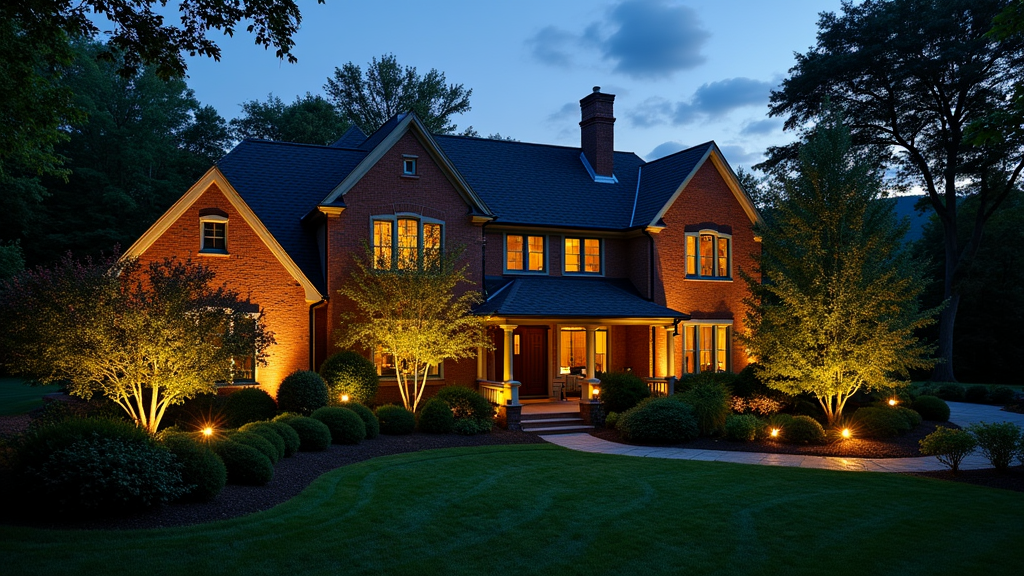Introduction
North Carolina is a state that embodies a rich tapestry of natural beauty, diverse ecosystems, and historical significance. Over the centuries, the evolution of landscape architecture in North Carolina has mirrored societal changes, cultural shifts, and advancements in design philosophies. From the sprawling gardens of historic plantations to contemporary urban parks, the journey of landscape design in this region is both fascinating and intricate. In this article, we will delve deep into "Exploring the History of Landscape Architecture in North Carolina," uncovering its roots, major contributors, and significant milestones.
The Foundations of Landscape Design in North Carolina
Early Influences on Landscape Architecture
The history of landscape architecture in North Carolina dates back to the Native American tribes who inhabited the land long before European settlers arrived. These indigenous peoples had a profound understanding of their environment and utilized it sustainably. They cultivated crops like corn and tobacco while maintaining a balance with nature that many modern designers strive for today.
Colonial Period: Gardens and Plantations
With the arrival of European settlers in the 17th century, landscape architecture began to take on new forms. The colonial period saw the establishment of grand plantations characterized by formal gardens designed for aesthetics as well as function. These early landscapes were influenced by European styles but adapted to local conditions.
Notable Examples: The Role of Plantations
- Mount Vernon: While not in North Carolina, George Washington's estate served as an inspiration for many southern plantations. Biltmore Estate: Designed by Frederick Law Olmsted in the late 19th century, Biltmore is one of North Carolina's most iconic examples of landscape architecture.
The Antebellum Period: A Shift Towards Formality
As we move into the antebellum period (pre-Civil War), we see an increased emphasis on formal garden layouts that reflect European trends. This era brought about a desire for grandeur and symmetry within landscapes.
Characteristics of Antebellum Landscapes
- Symmetrical designs Use of boxwood hedges Flower beds arranged for visual impact
Key Figures in North Carolina Landscape Architecture
Frederick Law Olmsted: A Pioneer’s Influence
Frederick Law Olmsted is often hailed as the father of American landscape architecture. His work on Biltmore Estate set a precedent for future designers throughout North Carolina and beyond.
Olmsted’s Design Principles
Olmsted emphasized naturalistic landscapes that harmonized with their surroundings. His philosophy laid the groundwork for what would become known as “landscape design” in North Carolina.
Local Visionaries: Contributions from Within
While Olmsted was influential, many local architects have played crucial roles throughout history.
Examples Include:
- Ellen Shipman: Known for her exquisite gardens at various estates. Charles McKim: His works reflected classical influences intertwined with local flora.
The Evolution Through Wars and Economic Changes
Impact of World War II on Landscape Design
The mid-20th century was marked by significant changes due to World War II. Resources became scarce, leading to more pragmatic approaches to landscape design.
Emergence of Community Spaces
Post-war America saw a rise in community parks designed to promote social interaction among returning soldiers and their families.
Modern Trends in Landscape Architecture in North Carolina
Sustainable Practices and Green Infrastructure
In recent decades, sustainability has taken center stage within landscape architecture. Designers now focus on eco-friendly materials and practices that minimize environmental impact while enhancing public spaces.
Examples Include Green Roofs and Rain Gardens
- Green roofs help regulate building temperatures. Rain gardens filter stormwater runoff effectively.
Urban Revitalization Projects
Cities across North Carolina have embarked on revitalization projects aimed at improving public spaces.
Key Projects Highlighted
The transformation of downtown Raleigh's public spaces The revitalization efforts along Charlotte's waterfrontExploring Cultural Heritage Through Landscapes
Historic Preservation Efforts
As communities strive to preserve their heritage, numerous initiatives have emerged focusing on restoring historic landscapes reflective of specific time periods or events.
Importance for Education and Community Engagement
Such preservation not http://landenhmsx868.lucialpiazzale.com/utilizing-container-gardening-techniques-across-different-spaces only educates residents but also fosters pride within local communities.
Challenges Facing Landscape Architecture Today
Balancing Development with Conservation Needs
With rapid urban growth comes challenges related to conservation. Designers must navigate these complexities while ensuring their projects align with environmental standards.
Questions Arising:
- How can we ensure sustainable development? What role do community voices play?
Incorporating Technology into Landscape Design
Digital Tools Revolutionizing Design Processes
Advancements in technology are reshaping how landscape architects approach their work—from computer-aided design (CAD) software to Geographic Information Systems (GIS).
Benefits Include:
- Enhanced visualization capabilities Improved data collection methods
Conclusion
Exploring the history of landscape architecture in North Carolina reveals not just an evolution but also an ongoing dialogue between nature and humanity's aspirations. As we look ahead, it becomes clear that this discipline continues to adapt—responding creatively to changing social needs while respecting our rich historical legacy.
FAQs
1. What defines landscape architecture?
Landscape architecture involves designing outdoor areas to create functional spaces that are aesthetically pleasing while considering ecological balance.
2. Who are some notable figures in NC’s landscape design history?
Frederick Law Olmsted is one; other influential figures include Ellen Shipman and Charles McKim who contributed significantly during different eras.
3. How has technology impacted modern landscape architecture?
Technology enables better planning through digital modeling tools which enhance visualization processes and improve overall project outcomes.
4. Why is sustainability important in today's landscape design?
Sustainability ensures that design practices do not harm ecosystems while meeting human needs—promoting greener living environments for future generations.
5. What are community parks’ roles post-WWII?

6. How does preserving historic landscapes benefit communities?
Preserving these sites fosters education about local history while instilling pride among residents through cultural recognition shared across generations.
This detailed exploration into "Exploring the History of Landscape Architecture in North Carolina" has highlighted various aspects from early influences to modern trends—each shaping how we perceive our landscapes today.